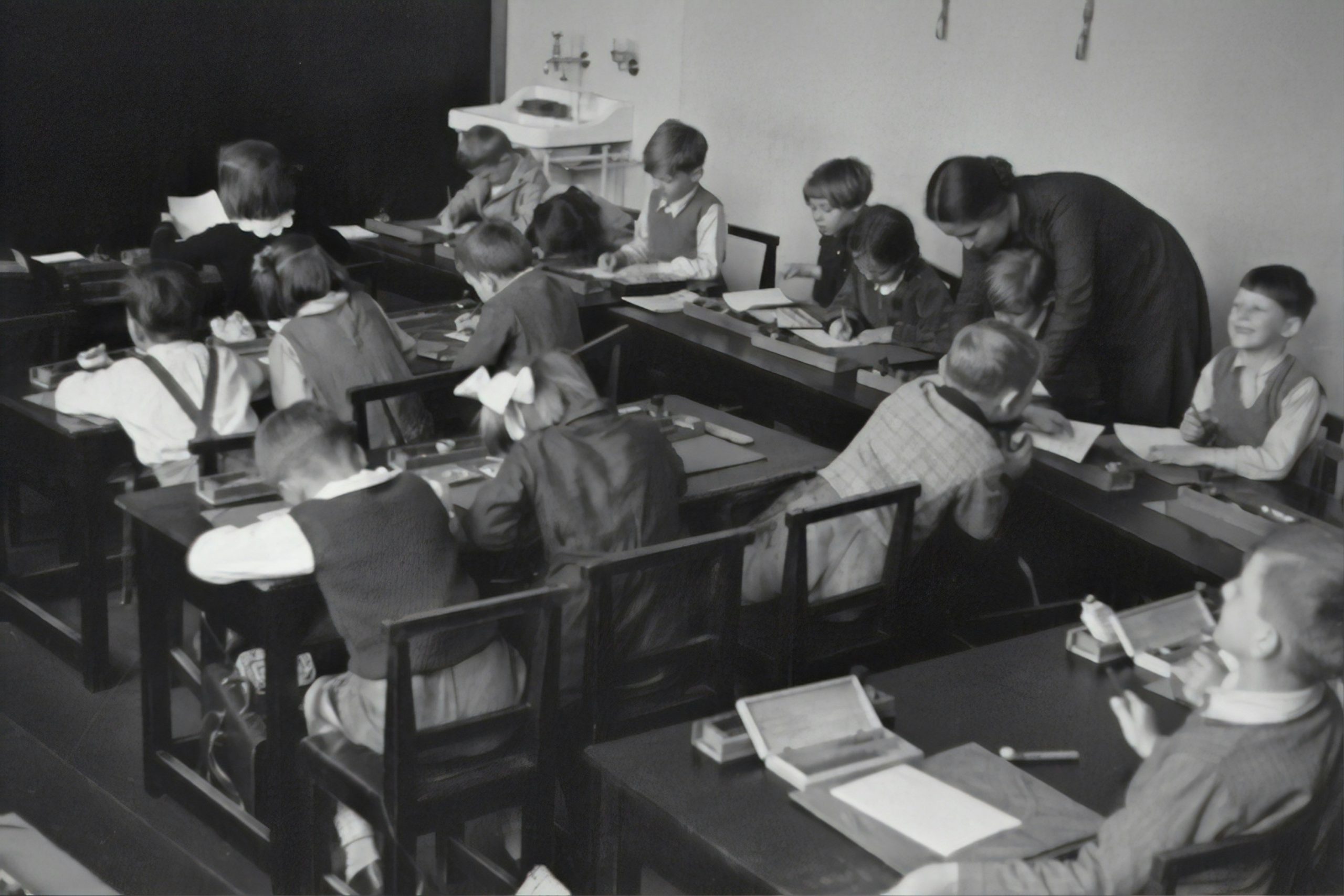A Comprehensive Guide to the Best Grammar Schools in UK
Exploring the Best Grammar Schools in the UK: A Gateway to Academic Excellence
In the landscape of secondary education in the UK (state schools, grammar schools and private schools), grammar schools represent a cornerstone of academic excellence, designed to nurture the intellectual capabilities of students through a rigorous selection process based primarily on academic ability. These state-funded schools are often compared with private schools for their high standards and exceptional academic performance, making them a sought-after choice for parents and guardians aiming for the best possible education for their children.
This article delves into the realm of the best grammar schools in the UK, offering a comprehensive overview of what makes these institutions stand out in a crowded educational field. Grammar schools, with their distinct emphasis on scholastic achievement, continue to play a pivotal role in shaping the academic landscape of the country. Here, we explore not only the characteristics and achievements that place these schools at the top of their class but also the broader implications of attending a grammar school on a student’s future prospects.
Throughout this piece, we will examine various facets of grammar schools, from the historical evolution and the criteria that define the best among them to the specifics of the admission process and the ongoing debates surrounding their impact on the wider education system. Whether you are a parent considering the options for your child’s secondary school or an educator interested in the dynamics of academic development at the highest levels, this article aims to provide valuable insights into why UK grammar schools are heralded for their academic rigour and how they compare to other schools in the UK.
What are Grammar Schools?

Grammar schools are a distinctive category of secondary school in the UK, renowned for their emphasis on academic excellence and high academic performance. Unlike comprehensive schools, which accept all local students regardless of academic ability, grammar schools select their students through a rigorous testing process that assesses academic potential. This selection is primarily conducted via the 11-plus examination, which evaluates pupils’ capabilities in areas such as verbal reasoning, non-verbal reasoning, maths, and English.
As state-funded schools, grammar schools offer a high-quality education without the tuition fees associated with private schools. However, their selective nature means that they often draw comparisons with private schools in terms of their educational standards and the academic environment they provide. This selectivity is aimed at fostering a learning environment that maximises the potential of students deemed to have high academic abilities, thus providing a focused setting for advanced educational achievement.
In the context of schools in the UK, grammar schools stand out for their commitment to delivering a curriculum that is both challenging and enriching. This curriculum is designed not only to push students academically but also to prepare them thoroughly for further education and professional careers, reflecting a deep-rooted ethos of nurturing intellectual and personal development.
The role of grammar schools within the UK educational system has been a subject of debate; however, their ability to consistently produce outstanding results in terms of GCSEs and A-levels underscores their place at the forefront of secondary education. By maintaining rigorous standards and a strong focus on scholastic attainment, UK grammar schools continue to be pivotal in shaping the academic trajectories of their students.
History of Grammar Schools

Origins and Development of Grammar Schools
The inception of grammar schools in the UK can be traced back to the medieval period when they were established primarily as all-boys schools to teach Latin—the lingua franca of educated classes and ecclesiastical affairs. These schools were initially founded by wealthy benefactors, religious groups, and guilds who recognised the importance of formal education in societal advancement. By the Tudor era, the model of the grammar school was well established, providing a curriculum focused on classical languages, literature, and preparation for university entrance, particularly for those aiming to enter the clergy or law.
As the demand for broader educational access grew, the 19th century saw significant expansions. This period introduced the concept of the girls’ grammar school, expanding academic opportunities to young women. These schools mirrored their male counterparts, promoting academic excellence in an all-girls setting, which was quite progressive at the time. Notable is the emergence of girls’ grammar schools and the transformation of some institutions into mixed-gender schools, though single-gender schools, like boys’ grammar schools and girls’ grammar schools, continued to thrive.
Changes in Policy and Public Perception Over Time
The 20th century brought transformative changes to grammar schools, primarily due to evolving educational policies and public perception. The 1944 Education Act was a landmark in British educational history, establishing free secondary education for all children. Grammar schools were to act as a pathway for those demonstrating high academic potential through the 11-plus exam. This system aimed to foster an environment of academic excellence, preparing students for professional careers and higher education.
During the 1960s and 1970s, the UK saw a shift towards a more inclusive educational model with the introduction of comprehensive schools. This move was driven by criticism that grammar schools perpetuated social divisions by selecting only academically gifted students, often overlooking talented individuals who might not perform well in standardised tests. As a result, many grammar schools were phased out or converted into comprehensive systems, although some retained their status, especially in Northern Ireland and parts of England.
In recent decades, the existence of grammar schools has continued to spark debate. Advocates argue that these schools provide unmatched opportunities for students capable of high academic achievement, often likening their rigour to that of private schools. Critics, however, argue that they can contribute to educational inequality by segregating children from a young age. Despite these debates, grammar schools have consistently maintained a reputation for excellence and high academic standards, with many continuing to rank highly for both GCSE and A-Level results.
As we continue to examine the best grammar schools in the UK today, it’s essential to recognise the historical roots and the evolving policies that have shaped their unique place in the education system, reflecting a lasting legacy of academic rigour and achievement.
What is the best Grammar School in the UK?

According to the Sunday Times’ influential Parent Power Secondary School Rankings, Wilson’s School in Sutton, South London, is currently ranked as the premier grammar school in the UK. This boys’ grammar school recently surpassed even well-known private schools such as Eton and Westminster to claim the top spot—not just as the foremost grammar school, but as the leading secondary school overall.
We will offer a more detailed introduction to Wilson’s School and other leading grammar schools later in this article. So, what sets Wilson’s School apart?
Wilson’s has long been celebrated for its academic prowess, consistently delivering outstanding results. In 2023, an impressive 94.9% of its GCSE students achieved grades 9-7, while at A-Level, 96.8% secured grades A*-B. Moreover, from its upper sixth form of 174 students, 27 earned places at Oxbridge.
Yet, Wilson’s School’s appeal extends beyond its academic achievements. The school is committed to fostering a supportive and dynamic learning environment where talent thrives and essential values such as resilience, kindness, integrity, and excellence are instilled in students.
What is the second-best Grammar School in the UK?
Securing the second place is Queen Elizabeth’s School in Barnet, London. Known for its rigorous standards and demanding curriculum, this boys’ grammar school consistently ranks highly in national league tables.
Established in 1573, Queen Elizabeth’s School boasts a rich tradition of over four centuries. Throughout its history, the school has remained dedicated to nurturing intellectual curiosity, critical thinking, and the overall holistic development of its students. It places a strong emphasis on extracurricular activities, encouraging students to pursue interests outside the classroom and develop key skills such as teamwork, leadership, and resilience.
The school’s outstanding reputation is, in part, due to its rigorous selection process. Admission is highly competitive, with candidates undergoing comprehensive 11 Plus assessments that evaluate their academic aptitude and potential, ensuring that only those best suited for its challenging curriculum are selected.
Which Region in the UK Boasts the Highest Number of Top Grammar Schools?

The UK is home to just over 160 grammar schools, but their distribution across the country is far from uniform. While some regions, such as Kent, boast a high concentration of these institutions, other areas including Norfolk, Bristol, and the North East of England have none.
When it comes to the sheer number of grammar schools, certain counties clearly stand out:
- Kent leads with a substantial total of 38 grammar schools.
- London follows with 19 grammar schools.
- Lincolnshire is home to 15 grammar schools.
- Buckinghamshire features 13 grammar schools.
- Essex has 8 grammar schools.
These figures highlight the regional disparities in the availability of grammar school education across the UK, with some areas offering more opportunities for this type of selective secondary education than others.
Criteria for Ranking Grammar Schools
When evaluating the best grammar schools in the UK, several key factors come into play. These criteria are essential for discerning which schools offer the highest quality of education and the best environment for nurturing young minds.
Academic Performance
The academic achievements of a grammar school are typically the primary metric of its success. Schools that consistently demonstrate high levels of academic excellence—reflected in their GCSE and A-Level results—are often regarded as the top contenders. This includes looking at both boys’ and girls’ grammar schools, which frequently feature prominently in league tables for their outstanding academic records.
Ofsted Ratings
The Office for Standards in Education, Children’s Services and Skills (Ofsted) provides a rigorous assessment framework for schools in the UK. Grammar schools are no exception, and their Ofsted ratings play a crucial role in determining their rank. Schools that achieve an ‘Outstanding’ rating are often considered among the best due to their high standards in teaching, learning outcomes, and overall school management.
Extracurricular Opportunities
A grammar school’s commitment to providing a well-rounded education is also measured by the breadth and quality of its extracurricular programmes. Whether it’s a boys’ grammar school focusing on sports, a girls’ grammar school excelling in arts, or any school offering a variety of clubs and societies, these activities enrich the students’ educational experience and help develop additional skills such as leadership, teamwork, and personal resilience.
Facilities and Resources
Top-ranking grammar schools are typically equipped with state-of-the-art facilities that enhance the learning experience. This includes modern laboratories for science and technology subjects, extensive libraries, and specialised classrooms. Schools that invest in these resources provide their students with the necessary tools to excel academically and pursue their individual interests in depth.
Student Support and Wellbeing Services
Finally, the support systems in place for students at a grammar school are vital for their academic and personal development. This includes counselling services, mentorship programmes, and pastoral care, which are particularly important in all-boys and all-girls schools. These services ensure that students not only achieve academic success but also maintain their mental and emotional health.
Admission Process for Grammar Schools

Gaining a place at a grammar school in the UK typically involves navigating a selective entry process, which is designed to assess the suitability of prospective students for an academically demanding environment. This process is centralised around the 11+ examination, along with other school-specific requirements.
The 11+ Examination: Overview and Preparation
The 11+ exam is a pivotal element in the grammar school admission process, primarily taken by students in Year 6, at the age of 10 or 11. This test aims to evaluate a child’s abilities in various areas such as verbal reasoning, non-verbal reasoning, quantitative reasoning, and English and Mathematics. The exact content and format of the 11+ can vary significantly between different counties and even between schools within the same area, reflecting their specific selection criteria.
Preparation for the 11+ exam is crucial and often begins well in advance of the test date. Many parents choose to support their children’s learning through additional resources such as practice papers, tutoring, and online courses. It is important to familiarise the child with the types of questions they might encounter, as well as with exam strategies and time management.
Other Entry Requirements and Procedures
Besides the 11+, some grammar schools may have additional entry requirements. These can include interviews, school-specific entrance exams, and reference letters from primary school teachers. These elements help schools assess a candidate’s suitability beyond academic prowess, such as their communication skills, enthusiasm for learning, and potential contributions to school life.
Some schools also consider criteria like catchment area, sibling attendance, and in some cases, faith, particularly if the school is affiliated with a religious organisation. It’s important for parents to research each target school’s specific requirements well ahead of application deadlines.
Tips for Successful Applications
- Early Preparation: Begin preparing for the 11+ exams early to ensure your child is comfortable with the format and pressure of the examination.
- Understand Each School’s Criteria: Research the specific admission criteria of each grammar school you are considering. This includes understanding whether they have additional tests, interviews, or particular focus areas.
- Attend Open Days: Visiting schools on open days can provide invaluable insight into the environment and ethos of the school. It also offers an opportunity to ask direct questions about the admission process.
- Holistic Development: Encourage your child to engage in a range of activities outside of academics. Many grammar schools look for well-rounded candidates who can contribute to the school community in various ways.
- Mock Exams and Feedback: Regularly practice with mock exams and seek feedback to improve. Understanding where improvements are needed will help focus your child’s preparation effectively.
- Stay Informed: Keep up-to-date with any changes in the admission process or dates by regularly checking the school’s website or contacting them directly.
Navigating the admission process for grammar schools can be demanding, but with careful preparation and a clear understanding of what is expected, you can maximise your child’s chances of success.
Comparison of Grammar Schools and Other Types of Schools in the UK

Understanding the differences between grammar schools, comprehensive schools, and private schools can help parents and students make informed decisions about their secondary education options. Each type of school offers distinct advantages and challenges, shaping the educational landscape in unique ways.
Grammar Schools vs Comprehensive Schools
Grammar Schools are selective, requiring students to pass an entry test such as the 11+ exam. This selective process aims to create an environment tailored for academically gifted students, fostering a focused and competitive academic atmosphere. Grammar schools often boast high academic standards and excellent exam results, making them a preferred choice for parents and students aiming for top universities.
Comprehensive Schools, on the other hand, are non-selective and admit students regardless of their academic abilities. These schools cater to a wider range of learning needs, providing a more inclusive education system. They aim to offer equal opportunities for all students, focusing on providing a balanced education that caters to varied interests and abilities.
Advantages of Grammar Schools:
- High academic standards and consistently strong exam results.
- Like-minded peers which may enhance motivational levels and academic competition.
- Often have strong alumni networks and historical prestige that can benefit students.
Advantages of Comprehensive Schools:
- Greater emphasis on social inclusivity and diversity.
- Often more focused on holistic education, valuing personal development alongside academic achievement.
- Flexible curricula that can adapt more readily to the needs of a diverse student body.
Grammar Schools vs Private Schools
Grammar Schools are state-funded and do not charge tuition fees, making them accessible to students who pass the selective entrance tests. They share a similar ethos to private schools regarding academic excellence and often match or surpass the educational standards seen in private institutions.
Private Schools charge fees but typically offer smaller class sizes, more varied extracurricular activities, and sometimes superior facilities. They may also have fewer constraints on curricular content, allowing for a more bespoke education tailored to their students’ needs.
Advantages of Grammar Schools Over Private Schools:
- Free education is accessible to those who meet the academic criteria.
- Often located within local communities, facilitating easier daily commutes.
- High standards of education without the financial burden on families.
Advantages of Private Schools:
- More resources for extracurricular and enrichment activities.
- Potentially more personalised attention due to smaller class sizes.
- Flexibility in curriculum design that may benefit students with specific learning needs or interests.
Pros and Cons of Grammar School Education
Pros:
- Encourages a high level of academic achievement.
- Prepares students well for university and professional careers.
- Provides an environment of peers who are similarly focused on academic success.
Cons:
- The selective nature can add pressure and stress at a young age.
- May not cater as well to students with broad or varied academic strengths that do not align perfectly with traditional academic subjects.
- Limited social diversity compared to comprehensive and private schools, might affect students’ social development.
Each type of school offers different benefits and potential drawbacks, and the choice between them will depend largely on a child’s individual needs, abilities, and the family’s educational values and priorities. Understanding these distinctions can help ensure that students are placed in an environment that best supports their educational and personal development.
The Top 10 Grammar Schools in the UK
We will now take a closer look at some of the best grammar schools in the UK, highlighting their unique attributes and the qualities that make them stand out in the educational landscape.
-
- Wilson’s School
As the premier Grammar School in the UK, Wilson’s School in Sutton, South London, is an all-boys grammar school celebrated for its academic achievements and high standards. Established in 1615, Wilson’s School is known for its ability to nurture talent across a range of disciplines. The school boasts cutting-edge facilities, dedicated teachers, and a supportive community, creating a vibrant learning environment where students excel academically, socially, and personally.
- Wilson’s School
-
- Queen Elizabeth’s School
With a heritage that dates back to 1573, Queen Elizabeth’s School in Barnet, North London, recently celebrated its 450th anniversary. This boys’ grammar is synonymous with high academic standards and has consistently been ranked among the UK’s top-performing schools. Queen Elizabeth’s is known for its meritocratic environment, which helps students reach their considerable potential.
- Queen Elizabeth’s School
-
- Henrietta Barnett School
Located in the picturesque Hampstead Garden Suburb of London, the Henrietta Barnett School is one of the best girls’ grammar schools, established in 1911. Henrietta Barnett combines rigorous academics with innovative teaching and a broad range of extracurricular activities, all set within a beautiful Grade II* listed building designed by Lutyens.
- Henrietta Barnett School
-
- Pate’s Grammar School
Pate’s Grammar School in Cheltenham, Gloucestershire, founded in 1574, is a mixed grammar school and is committed to fostering innovation and personal growth, providing a well-rounded education in an inspiring environment. Its supportive community and modern facilities contribute to a stimulating educational experience. Recent results highlight the school’s high standards, with over 91% of A Level students achieving A*-B grades and 90% of GCSE students securing grades 9-7.
- Pate’s Grammar School
-
- St Olave’s Grammar School
Located in Orpington, Kent, St Olave’s Grammar School has a storied history of academic success dating back to the sixteenth century. The school is celebrated for its diverse student body and a culture of respect and dignity. Staff members are noted for their deep understanding of individual student needs, creating a nurturing and supportive environment. Academic standards are notably high, with 91% of A-Level grades between A* and B, and 50% of GCSEs awarded the top grade 9.
- St Olave’s Grammar School
-
- Colchester Royal Grammar School
One of the oldest schools in England, Colchester Royal Grammar School was established in 1206 in Essex. Known for its commitment to academic excellence and holistic development, the school joined the Thinking Schools Academy Trust in 2013, enhancing its focus on innovative and inspiring educational practices. CRGS, primarily an 11-18 boys’ school, also admits girls in the sixth form and offers boarding options, creating a diverse and dynamic educational setting. The school excels in providing a range of trips, extracurricular activities, and global exchanges, preparing students for a successful future in a globalised world
- Colchester Royal Grammar School
-
- The Tiffin Girls’ School
Situated in the serene suburb of Kingston upon Thames, The Tiffin Girls’ School, founded in 1880, is renowned for its academic excellence and nurturing atmosphere. This all-girls grammar school is dedicated to creating a supportive environment that encourages students to excel academically and grow into confident, independent young women. The school’s ethos, embodied by its motto “sapere aude” or “dare to be wise,” fosters an inclusive and vibrant atmosphere, where girls are continuously encouraged to engage in active citizenship and embrace new challenges.
- The Tiffin Girls’ School
-
- Reading School
Established in 1125 as part of Reading Abbey, Reading School is one of the oldest and most distinguished boys’ grammar schools in the UK. Located in Berkshire, the school marries tradition with modern educational practices to deliver an outstanding education. Its students consistently achieve top results, with over 90% of A-Level entries receiving A*-B grades and 85% of GCSEs scored at grades 9-7. However, Reading School considers these impressive results as just one aspect of education, focusing instead on cultivating qualities such as hope, societal contribution, cultural awareness, and innovation to bring out the best in humanity.
- Reading School
-
- King Edward VI School (KES) King Edward VI School, nestled in the historic town of Stratford-upon-Avon, Warwickshire, dates back to 1295, making it one of the country’s oldest and most esteemed grammar schools. Renowned as the school once attended by William Shakespeare, KES blends a rich heritage with a contemporary educational approach, offering students a vibrant learning atmosphere in a truly historic setting. The school ensures personalised attention by maintaining small class sizes in examination years, covering both GCSE and A Level courses. KES also offers a vast array of extracurricular activities including competitions, work experience, foreign exchanges, visiting lectures, and field trips. Notably, the town also hosts an exceptional girls’ grammar, Stratford-upon-Avon Grammar School for Girls, known locally as Shottery.
- Altrincham Grammar School for Girls Founded in 1910 and situated in Altrincham, Cheshire, Altrincham Grammar School for Girls is renowned for its commitment to fostering academic excellence and personal development. As a member of the Bright Futures Educational Trust, the school provides a plethora of educational and extracurricular opportunities, creating a supportive and inclusive environment where young women are empowered to excel both academically and personally. The school’s ethos promotes the enjoyment of learning, self-discipline, empathy for others, and leadership opportunities, encouraging every student to realise their full potential.
Top Grammar School UK List

Apart from the top 10 schools in the UK, we prepared a list of more grammar schools that take pride in the excellent results their students achieve year after year. Whether you are looking for an all-girls school, a school for boys or mixed, based on location, here you can find the institution that best suits your child.
Aquinas Diocesan Grammar School
Located on Ravenhill Road in Belfast, Northern Ireland, Aquinas Diocesan Grammar School is a coeducational Catholic institution. The school offers a broad curriculum, primarily following the CCEA board, though it also incorporates AQA and Edexcel for various subjects. In 2019, it ranked 11th out of 159 secondary schools in Northern Ireland, with 88.4% of its A-level students achieving between three A*-C grades.
St Mary’s Grammar School, Magherafelt
St Mary’s Grammar School, located in Magherafelt, County Londonderry, Northern Ireland, is a coeducational institution established in 1927. It educates approximately 1,099 pupils aged 11-18. Deirdre Gillespie has served as principal since 2011. The school is ranked second in Magherafelt based on performance data and Ofsted ratings.
Stratford Girls’ Grammar School
Located in Stratford-upon-Avon, England, Stratford Girls’ Grammar School, formerly known as Stratford-upon-Avon Grammar School for Girls, is a highly selective girls’ grammar school. It became a Specialist Language College in 2002 and was later designated a Specialist Science College. Consistently ranked among the top twenty state schools in England, the school has held academy status since 2011. Entry to the school is competitive, requiring an examination at the age of 11, with many students also joining for sixth form.
The Rochester Grammar School
Also known simply as RGS and formerly known as Rochester Grammar School for Girls, caters to girls aged 11 to 18 and includes boys in its sixth form.
Renowned for its academic excellence in the South East of England, a 2010 BBC report highlighted the school as having the highest GCSE results in the region and the second-best A/AS-Level grades.
Sutton Coldfield Grammar School for Girls
Sutton Coldfield Grammar School for Girls, originally known as Sutton Coldfield High School and later Sutton Coldfield Girls School, is a renowned 11–18 girls’ secondary grammar school with academy status.
Langley Grammar School
Langley Grammar School is a coeducational grammar school with academy status, located in Langley, Berkshire.
Admission to the school is selective, based on demonstrated aptitude. Entry at age 11 is determined through the NFER 11+ test, while sixth-form admission requires strong performance at GCSE level and a successful interview.
Sir Thomas Rich’s School
Sir Thomas Rich’s School opened an Economics, Entrepreneurship, Careers and Outreach Centre in 2020, alongside its dedicated Language Centre and Music Suite.
The school offers a unique afternoon games programme, allowing pupils to participate in structured sports alongside their academic pursuits. Facilities include a sports hall, gym, swimming pool, and an attached bowls club, supporting a wide range of sports clubs and teams.
Dartford Grammar School
Dartford Grammar School, situated in Kent just outside London, is one of the oldest schools for boys in the country. Uniquely, it exclusively offers the International Baccalaureate (IB) programme, stepping away from the National Curriculum.
Aylesbury Grammar School
Aylesbury Grammar School, located in Buckinghamshire and established in 1598 by Sir Henry Lee, celebrated its 100th anniversary at its current Walton Road site in 2007. Known as AGS, the school has over 1300 pupils and operates as a selective state institution, with admissions governed by the Buckinghamshire Transfer Test, formerly known as the “11-plus.”
Chesham Grammar School
Located on White Hill in Chesham, Buckinghamshire, Chesham Grammar School is a coeducational institution serving over 1,300 students aged between eleven and eighteen, including more than 400 sixth formers.
Recognised as a Humanities College by the Department of Education in 2007, the school transitioned to Academy status in August 2011. Admissions are facilitated by the Buckinghamshire County Council, which maintains a selective secondary education system; students must achieve an 11-plus score of 121 or above to be admitted to the school.
Chelmsford County High School for Girls
Chelmsford County High School for Girls, located in Chelmsford, Essex, England, is a selective grammar school for girls aged 11 to 18. Known as “CCHS,” the school requires an academic selection test for admission. It consistently achieves top results for both GCSEs and A-levels, making it one of the UK’s leading secondary schools.
Sullivan Upper School
Sullivan Upper School, a mixed non-denominational voluntary grammar school in Holywood, Northern Ireland, places a strong emphasis on academic excellence, with most students expected to pursue a two-year course of GCE AS and Advanced Level courses after their GCSEs. Many graduates go on to attend prestigious universities, including Oxford and Cambridge. Students joining at age 11 undertake a five-year programme, preparing for GCSE examinations in at least nine subjects.
Lancaster Girls’ Grammar School
Lancaster Girls’ Grammar School is an excellent choice for your daughter’s education. All female applicants are required to sit their entrance examinations. Admission is based on the girls’ performance in these exams. Preparation resources are available on the GL Assessment website. It’s important to note that Lancaster Girls’ School does not assess nonverbal reasoning.
Sale Grammar School
Sale Grammar School, located just south of Manchester, England, is a prominent grammar school that transitioned to an Academy Trust Grammar School in 2011. The school administers its own entrance exam and is part of Trafford’s fully selective secondary education system. It has received an “outstanding” rating in its latest Ofsted assessment.
Newport Girls’ High School
Newport Girls’ High School in Newport, Shropshire, England, is an all-girls grammar school with academy status. Founded in 1919 by a group of female governesses, it began as a single-sex day school for local girls. It specialises as a centre for mathematics and computing.
Tonbridge Grammar School
Located in Tonbridge, Kent, transitioned from a girls-only school to include a coeducational sixth form in 2002. Tonbridge Grammar School has earned recognition as the best IB state school in the UK on multiple occasions. As part of the IB curriculum, all students are required to study at least one language, one science, maths, and a social science subject up to Sixth Form. The school has a special focus on languages, maths, and computing.
Colyton Grammar School
Colyton Grammar School, located in Devon, boasts an “Outstanding” Ofsted rating, reflecting its pupils’ high performance across all GCSE subjects. The school prides itself on fostering a love for learning among its students, who display intellectual curiosity and enthusiasm for discovery from Year 7 to Year 13.
Dr Challoner’s High School
Dr Challoner’s High School, an all-girls selective grammar school located in Amersham, Buckinghamshire is recognised as one of England’s premier secondary schools, consistently ranking in the top 50 in national league tables.
The school is known for its strong academic performance, with nearly all A-Level students progressing to higher education, including receiving offers from Oxbridge and Russell Group universities.
Wallington County Grammar School
Wallington County Grammar School, an all-boys grammar school with a mixed Sixth Form, is located in Wallington, Outer London. The school’s latest Ofsted report rated it as Outstanding, highlighting its high academic success. Uniquely, the school does not conduct second-stage interviews, meaning that prospective students only need to pass the Selective Eligibility Test (SET) to gain admission.
Dane Court Grammar School
Dane Court Grammar School is a coeducational grammar school with academy status in Broadstairs, Kent, UK with approximately 1,249 pupils. Dane Court was awarded the Intermediate International Schools Award in 2006.
Rugby High School
Rugby High School, a prestigious grammar school, is situated in the Bilton area of Rugby, Warwickshire, England. It accepts boys aged 16 to 18 and girls aged 11 to 18. Admission to the school requires all prospective students to achieve a high score on the Eleven Plus test.
South Wilts Grammar School
South Wilts Grammar School, located in Salisbury, South Wiltshire, England, caters to students aged 11 to 18. Originally founded as South Wilts Grammar School for Girls in 1927, it transitioned to academy status in 2011. In 2020, the school was renamed South Wilts Grammar School to reflect its new policy of admitting male pupils into the sixth form from September that year.
Torquay Girls’ Grammar School
Located in Torquay, Devon, this is a selective grammar school for girls aged 11 to 18. In September 2004, it became one of the pioneering schools to be designated as a Humanities Specialist School and was among the first to offer the AQA Baccalaureate. Torquay Girls’ Grammar School consistently ranks among the top twenty state schools for girls in the country based on its test results.
Our Lady and St Patrick’s College
Also known as OLSPCK or simply Knock, is a Catholic diocesan grammar school located in Knock, a town to the east of Belfast, Northern Ireland. The school has seen an increase in its student numbers, and in late 2019, it anticipated a future enrolment of 1,330 students.
In 1984, college trustees led by Bishop Cahal Daly proposed a merger with the Sacred Heart of Mary Grammar School in Holywood, County Down. The merger, effective from September 1985, aimed to create a co-educational institution while remaining at the Knock site.
Wycombe High School
Wycombe High School, located in High Wycombe, Buckinghamshire, is one of the prestigious grammar schools for ages 11 to 18. The school converted to an academy in 2011 and by 2020, it was educating 1,308 students. Prospective students and their families can visit the school to see it “in action” during the three and a half weeks between Monday, 19 September, and Wednesday, 12 October, coinciding with the period when students complete their Secondary Transfer test and await the results. Visits can be arranged for small groups at 9.00 am or 2.50 pm on these dates.
Bishop Wordsworth’s School
Bishop Wordsworth’s School is a Church of England boys’ grammar school for students aged 11 to 18, located in Salisbury, Wiltshire. Situated adjacent to the Cathedral School on the grounds of Salisbury Cathedral, the school is renowned for its academic excellence and, in 2010, achieved the highest scores for the English Baccalaureate.
Southend High School for Boys
Commonly referred to as SHSB, is a selective secondary grammar school located in Prittlewell. The school caters to students aged 11 to 18, with admission based on performance in the selective 11+ exams administered by the Consortium of Selective Schools in Essex (CSSE). It achieved academy status on 1 February 2011, granting it greater autonomy. In recent years, the school has experienced an increase in student numbers.
Southend High School for Girls
Southend High School for Girls, a grammar school with academy status, is situated on Southchurch Boulevard in the eastern part of Southend-on-Sea, Essex, England. The school caters to students aged 11 to 18. As of 2022, it boasts an ‘Outstanding’ rating from its most recent Ofsted inspection in 2011. The school specialises in languages. At Key Stage 3, every student studies either French and Spanish or French and German.
Bishop Vesey’s Grammar School
Bishop Vesey’s Grammar School, situated in the West Midlands, is one of the oldest schools in the country. The school offers what it calls the “Vesey experience,” providing students with exclusive access to a wide range of high-quality extracurricular activities alongside outstanding academic excellence.
Sutton Grammar School
Sutton Grammar School is a selective all-boys grammar school that admits girls into the Sixth Form. Each year, the school welcomes approximately 135 students into Year 7, following successful completion of the Selective Eligibility Test (SET) and the school’s own test. Sutton Grammar is renowned for its outstanding academic achievements and its focus on equipping students with the skills necessary for university and future careers.
Beaconsfield High School
Beaconsfield High School, commonly referred to as Becky High, is a grammar school for girls located in Beaconsfield, Buckinghamshire. The school admits girls aged 12 to 18, focusing on A-level education. Admission is contingent on pupils from Buckinghamshire primary schools passing the 11+ test with an average score of 121/141, although those scoring around 117 may be considered on appeal.
Aylesbury High School
Aylesbury High School (AHS), also informally known as “Aylesbury Girls'” or simply “the High,” was established when the coeducational Aylesbury Grammar School, founded in 1598, split into two single-sex grammar schools. Located in Aylesbury, Buckinghamshire, it remains close to its counterpart, Aylesbury Grammar School. The school admits students based on the eleven-plus exam.
Westcliff High School for Girls
Westcliff High School for Girls, commonly referred to by its initials WHSG, is a prestigious grammar school and academy located in Southend-on-Sea, Essex. The school caters to students aged 11 to 18, with admission based on performance in the selective 11+ exams administered by the Consortium of Selective Schools in Essex (CSSE).
Westcliff High School for Boys
Westcliff High School for Boys Academy, established in the 1920s, is located in Essex. It received ‘Beacon Status’ in recognition of the breadth of its achievements and the quality of its pupils’ work.
Tiffin School
Tiffin School is highly regarded, with entry being extremely competitive: approximately 1,800 applicants vie for places each year, with only about 1 in 10 boys securing a place. Therefore, it is crucial to begin preparation early. The school’s entrance exams cover only English and Maths, eliminating the need for Verbal and Non-Verbal Reasoning revision. However, a strong grasp of core English and Maths concepts is essential. Candidates must also familiarise themselves with the format of the Stage 1 tests, which are multiple-choice and computer-marked, requiring precise answers.
Devonport High School for Girls
Devonport High School for Girls, established in 1908, has been located at its current site since 1937. It was founded 15 years after its sibling school, Devonport School for Boys. In 2005, the school was designated a Specialist School in Languages, receiving additional funding to build a new Learning Centre. This centre features a modern library, new language laboratories, and two new computer rooms.
Ripon Grammar School
Ripon Grammar School, a historic institution over 450 years old, is situated in North Yorkshire and is recognised as one of the leading secondary schools in England. It offers both day and boarding options. As a state school, education is provided free of charge, making it a cost-effective option for boarding compared to private boarding schools.
Colchester County High School for Girls
Colchester County High School for Girls was founded in 1909 as a grammar school in North Essex. It has since evolved into a Grammar Academy and is now part of the Alpha Trust, which also includes The Gilberd School, Manningtree High, and Home Farm Primary School. The trust aims to enhance academic resources and opportunities, aiding students in achieving academic excellence. Additionally, it was one of the UK’s first specialist science schools and also specialises in modern foreign languages.
Newstead Wood School
Newstead Wood School is a girls’ grammar school with academy status in Orpington, Greater London. Make sure you know everything about this school that can help you get started with the admissions process. You can find helpful information about the 11 plus exam on this page, such as exam practice resources, information about exam boards and key dates.
Bournemouth School
Bournemouth School for Girls is a grammar academy school located in Bournemouth, Dorset, England. It serves girls aged 11 to 18, encompassing both the grammar school and sixth-form college levels. The school has approximately 1,100 pupils, with 300 of them enrolled in the sixth form.
Conclusion
In exploring the best grammar schools across the UK, we’ve highlighted institutions renowned not only for their academic excellence but also for their rich histories and commitment to holistic development. These schools offer environments where students are not just taught but are truly nurtured, and encouraged to develop both intellectually and personally. The diverse array of grammar schools, each with its unique ethos and strengths, ensures that potential students can find a place where they can thrive and excel.
Grammar schools continue to be a pivotal part of the UK’s educational landscape, providing pathways to academic success and future opportunities. For parents and students considering this route, understanding each school’s ethos, expectations, and the admission process is crucial. With dedication and preparation, students can gain access to these esteemed institutions, which promise not only a robust academic foundation but also the skills and values needed to succeed in an ever-changing world.







